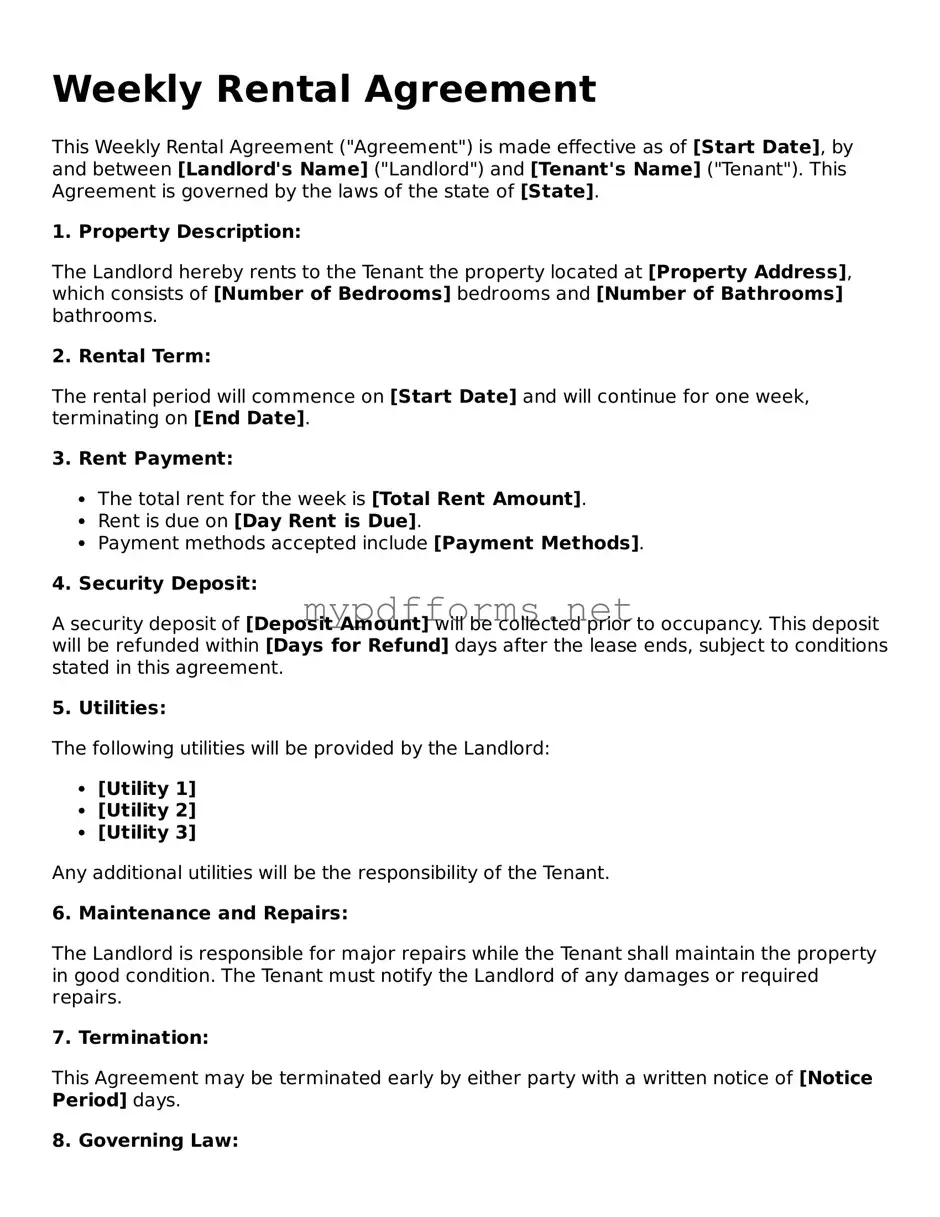The Weekly Rental Agreement form shares similarities with a Lease Agreement. Both documents establish a legal relationship between a landlord and a tenant. They outline the terms and conditions for renting a property, including rent amount, payment due dates, and duration of the tenancy. While a Lease Agreement typically covers a longer term, the Weekly Rental Agreement focuses on short-term rentals, often with weekly renewal options.
Another document that resembles the Weekly Rental Agreement is the Month-to-Month Rental Agreement. This agreement allows tenants to occupy a property on a monthly basis, with the flexibility to terminate the lease with a shorter notice period. Like the Weekly Rental Agreement, it specifies rental terms, payment schedules, and responsibilities of both parties. However, the Month-to-Month Rental Agreement provides more stability for longer stays compared to the weekly structure.
The Short-Term Rental Agreement is also similar to the Weekly Rental Agreement. This document is designed for rentals that last less than a month, often used for vacation or temporary housing. It includes terms regarding rental fees, security deposits, and property rules. Both agreements cater to transient tenants, but the Short-Term Rental Agreement typically addresses specific conditions related to short stays.
A Room Rental Agreement is another document that aligns closely with the Weekly Rental Agreement. This type of agreement is used when a tenant rents a single room within a larger property. It details the rental terms, including rent amount, shared responsibilities, and access to common areas. Both agreements aim to clarify expectations between landlords and tenants, although the Room Rental Agreement often involves shared living situations.
The Sublease Agreement can also be compared to the Weekly Rental Agreement. This document allows a tenant to rent out their leased property to another individual. It outlines the terms under which the subtenant will occupy the property, including rent and duration. Similar to the Weekly Rental Agreement, it requires the original tenant to maintain communication with the landlord regarding the subtenant's occupancy.
The Lease Agreement form, an essential component of the rental process, ensures that both landlords and tenants have a clear understanding of their obligations and rights. For those interested in exploring lease agreements in the state, resources like Ohio PDF Forms can provide valuable templates and guidelines to help navigate the legal intricacies involved in establishing a secure and fair rental relationship.
Lastly, the Rental Application Form bears a resemblance to the Weekly Rental Agreement in that it serves as a preliminary document for establishing a rental relationship. While the Weekly Rental Agreement finalizes the terms of the rental, the Rental Application Form collects essential information from potential tenants, such as income, rental history, and references. Both documents are crucial in the rental process, ensuring that landlords can make informed decisions about prospective tenants.
